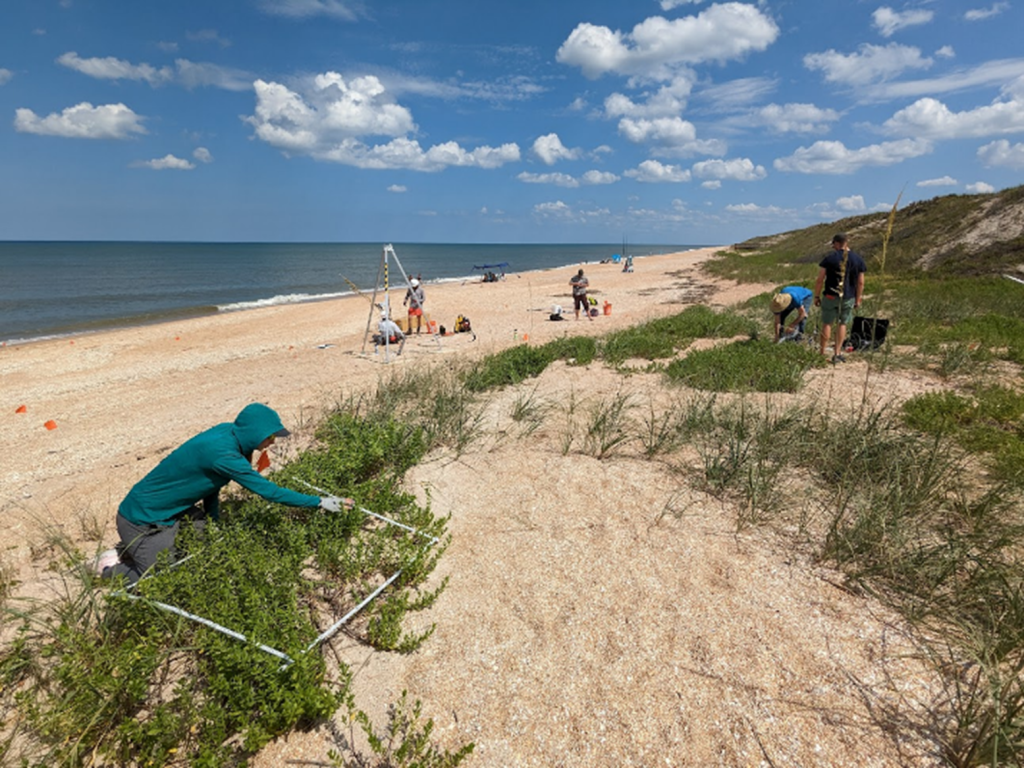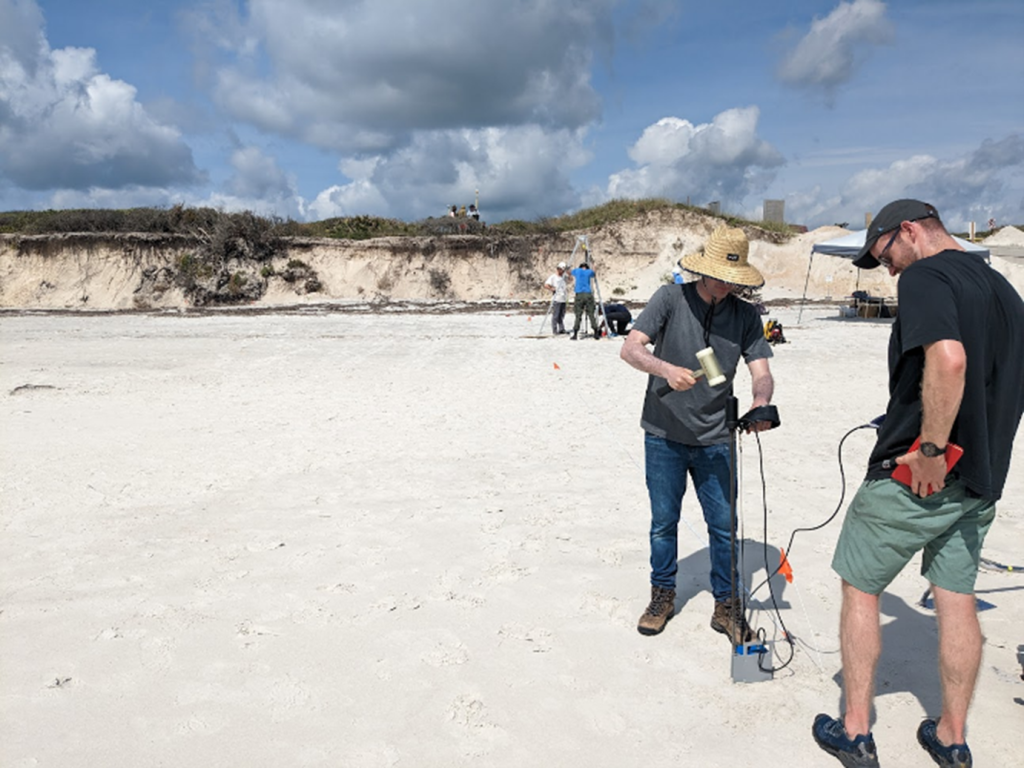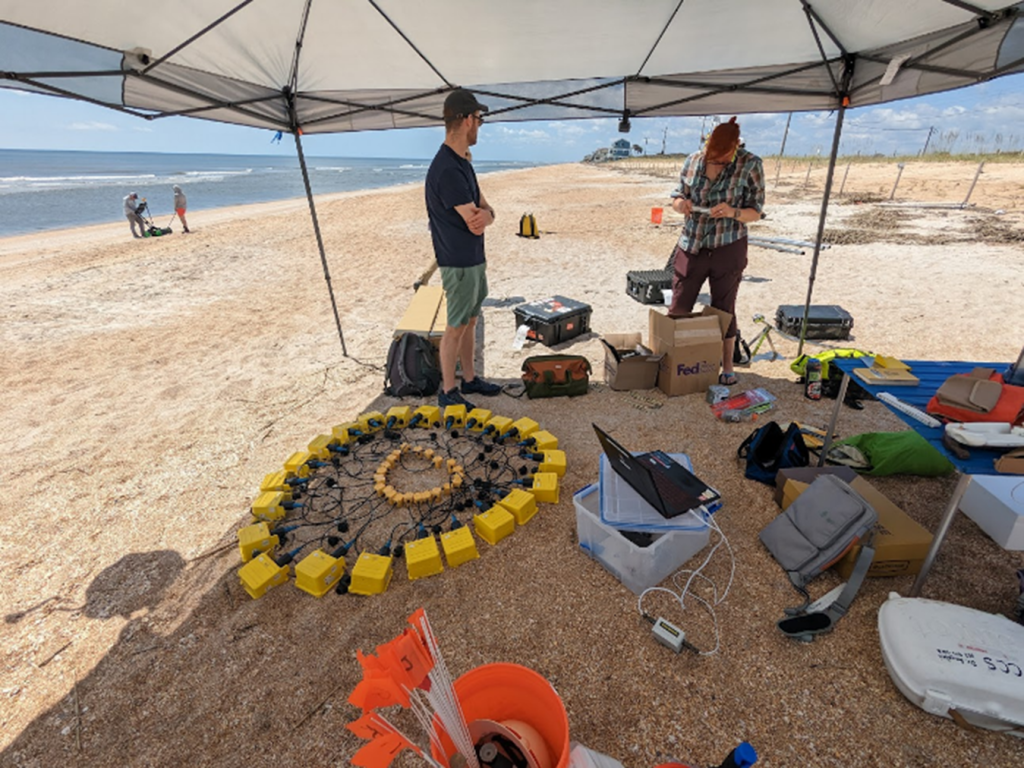Dunes are one of many natural features that provide a critical line of defense from coastal storms while also providing habitat and often recreation possibilities. This research project is characterizing the diverse range of geomorphic and geotechnical properties associated with natural, restored, and highly engineered dunes in Northeast Florida. The 5-site field study conducted in June 2023 collected coastal sand dune geophysical data to better understand the effects of storms and vegetation planting on the process of dune establishment. Ultimately this research will inform climate-resilient dune management.
Led by EWN researchers, Drs. Justin Shawler and Brian Harris, the interdisciplinary team embarked on a full-scale field investigation at five field sites in northeast Florida. This collaboration, facilitated through the Network for Engineering with Nature, brought together over 10 experts from various disciplines, including engineers, geologists, geographers, and ecologists from the US Army Engineer Research and Development Center, the University of Florida, and Villanova University.


Field data collection took place at both natural and restored sand dunes situated in prominent locations such as the Guana-Tolomato-Matanzas (GTM) National Estuarine Research Reserve, Fort Matanzas National Monument, and MalaCompra Park in Flagler County, FL. The extensive data collection effort encompassed a range of techniques, resulting in a remarkable tally of 17 vibracores, 100 vegetation quadrats, 30 biomass core samples, 50+ dynamic cone penetrometer (DCP) soundings, 50+ ground penetrating radar (GPR) profiles spanning over 2 km, 60+ grab samples, and 20+ surface wave surveys across the five sites.
In the coming months, the research team will analyze and process this wealth of data, which will eventually be integrated into dune erosion models through the UF-ERDC partnership. The outcomes of this study will fill fundamental knowledge gaps surrounding natural and restored dunes, offering a valuable foundation for future research endeavors. Furthermore, the insights gained will extend beyond the Northeast Florida region, serving as a guide for studies on dunes in different geographic areas and hybrid dunes.







